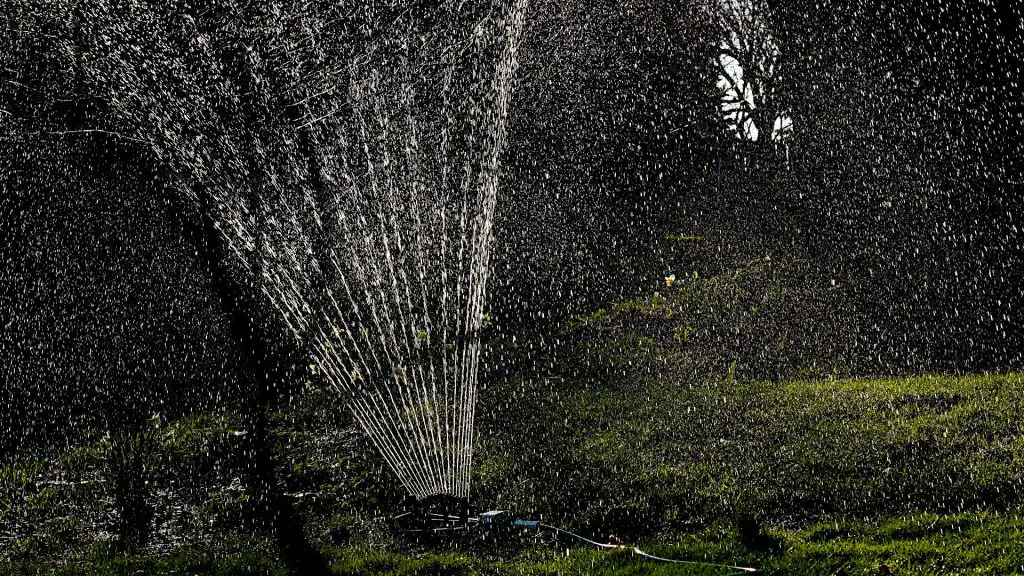Overseeding Your Lawn and Watering as Part of Good Lawn Care Practice
Overseeding your lawn and watering are established ways of maintaining a healthy lawn. Indeed overseeding has become an important part of good lawn care practice. The idea behind overseeding is to create a thick layer of grass seed over bare soil. This helps prevent weeds from growing and keeps the soil moist.
While overseeding can be effective at preventing weed growth, it also has some drawbacks. For example, overseeded areas tend to dry out faster than unseeded areas. This means that oveseeding needs to be accompanied by an appropriate watering program. This will depend on climate and the stage your overseeding is at.
If you want to overseed your lawn, here are some things to consider before you go ahead.
What is Overseeding
Overseeding is a great way to add color and texture to your yard. If you’ve never done it before, you might wonder whether or not you should wait until springtime to get started.
Overseeding is a technique where you plant seeds at specific times throughout the year. This allows them to germinate and grow into new plants during the warmer months. The idea behind overseeding is to create a lush green lawn without having to mow it every week.
You can start overseeding in the spring, but it won’t be ready to cut until late summer or early fall. In order to ensure that your grass has enough time to develop, you’ll want to water it regularly. Watering too often can cause roots to rot, so make sure to only water once per week.
How often should I water my lawn after aerating and overseeding?

Aeration is the process of loosening soil particles and creating air pockets around roots. This allows oxygen to reach them, helping plants absorb nutrients better. Overseeding is the process of adding new grass seed to areas where existing grass has died or been removed. As such before overseeding many gardeners aerate their lawns.
Aeration and overseeding are two ways to improve grass health and appearance. Aeration removes compacted soil from the root zone, allowing air and nutrients to reach the roots. Overseeding helps establish new turfgrass seedlings.
After aeration and overseeding, you’ll want to water your lawn regularly until it reaches its normal growth stage. Watering too soon or too little can cause problems such as poor establishment and disease.[1]
How much should you water after overseeding?
It is important that you water your overseeded areas regularly so they don’t dry out. You may need to water more frequently if you have clay soil. Clay soils hold moisture well but can become hard if not kept moist. That’s why you should water your lawn after aeration and overseeding.
Overwatering your overseeded lawn can cause problems such as poor establishment and weed invasion. In order to get the best results, you should water every day until the seedlings begin to emerge. Once they start growing, you can reduce the watering frequency to once per week.
If you are worried about overwatering, use a rain gauge to check how much rainfall your area receives. You shouldn’t need to worry about watering too much if you receive more than an inch of rain every week.
What time of day should I water my overseeded lawn?
The time of day that you choose to water your overseeded lawn can have a big impact on the success of your lawn’s overseeding. As the days become longer and warmer as we move from spring to summer, your grass has will dry out more quickly in between waterings.
A common misconception is that grass seedlings require constant watering. In reality, what they need is the ground to be moist which will be the determining factor in how often you water. After overseeding, watering a couple of times a day for around fifteen to thirty minutes is usually sufficient, unless you live in particularly arid conditions.
Once the grass starts to sprout, you can dial back your watering and should water every other day although this will again depend a little on the local climate.
Water your lawn 1-2 hours early in the morning, preferably before 9 a.m. This helps prevent the moisture from evaporating in the sun. It is advisable not to water in the evenings, particularly in warm humid conditions as this can provide elevated conditions for grass fungi to take hold.
How often should grass seed be watered until it germinates?
Grass seedlings usually start growing within 2 weeks after planting. They need regular watering until they reach 3 inches tall. As your grass grows, you can gradually increase the length and time between waterings.
Summary: Overseeding Your Lawn and Watering
Overseeding lawns is a great way to improve the appearance of your yard. This method also helps reduce water usage by keeping the grass growing longer. However, overseeding requires a little bit of work. To ensure success, it is important to do thorough research and prepare properly. Read through the steps outlined here to learn how to overseed your lawn.
Watering plays an important role in the success of your overseeding. It is important that you water but don’t overwater. The misconception that your overseeding requires constant watering can stunt growth and lead to lawn infections.
Notes:
[1] Technical Journal of Engineering and Applied Sciences: Study of Different AM Fungi and Soil Moisture Levels on Component of Yield of Grass
